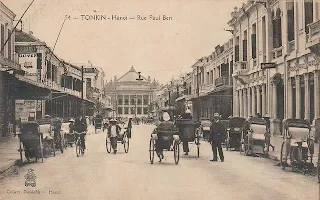Slightly vain, the city won’t bow down and give any tourists and easy time. Only those who are truly willing to understand and listen will recognize the logic of Hanoi's beauty, the complexity of its chaos and peace, its urban speed and rural tranquility.
History and name

Hanoi used to be called Thang Long (flying dragon). The myth was that in 2010, the new king Ly Cong Uan while visiting this valley saw a dragon flying into the sky, and took this as an omen that this place was a suitable capital to rule. Thang Long had rich soil and good defense because it was surrounded by the Red River and backed by mountains.
The city was later renamed Hanoi (which means inside the river) in 1831 when the Nguyen dynasty moved capital to Hue. Hanoi was returned its status as capital during the French rule from 1887 to 1954, and continued to be the capital, first of Communist North Vietnam (from 1954) and later, of the Socialist Republic of Vietnam.
As of 2008, Hanoi will be expanded to include the surrounding province of Hatay and parts of Ha Dong, to a size of 3.200km2 and population of over 6 million people.
http://www.vietnamtravelguide.com
Photo collection
Long Bien Bridge
Recommended tour:



















0 Comments